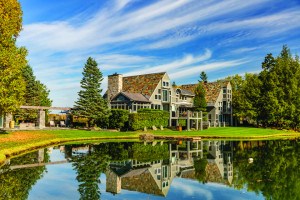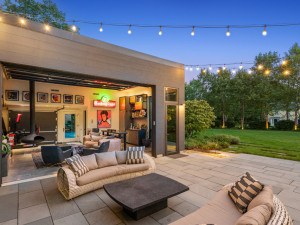Tall Order

Photo by Matt Kalinowski
Were you always interested in design?
As a kid, I would draw up buildings, floor plans, models, and city plans. And I was a big sports fan, so I did some journalism, too, writing about sports in my own self-published newspaper. But when I was 15, my dad told me that if I kept these hobbies up I would starve.
So you went to Harvard Law School instead, and became deeply entrenched in Washington politics. What made you return to your passion?
I found my calling when I took a couple of art courses at Harvard’s Carpenter Center. I had those other passions, but I found that what I really cared about was architecture—at the city-planning level and at the doorknob level.
What’s the most important thing you learned in school?
Working in the community-affairs office at UMass taught me the most important thing: how to listen. You don’t start drawing until you’ve listened for a very long time. The minute you draw, you get invested in those drawings and you risk losing your openness.
So how do you incorporate listening into your practice?
We figure out what we call the patterns of place. Every building, every city, every neighborhood has a feeling of place, and we have to plug into it. The community knows better than I do what its needs are, its desires, and its aspirations. The citizenry, the taxpayers—it’s their building. The audience is what makes it go. The best architects don’t start drawing until they’ve talked to the soul.
What else do you do besides listen? The only way to get to know a place is to go
there. Our team lives in a place for three days maybe three times during the design process, so we really soak in the spirit. It’s the way we institutionalize listening.
How would you describe your style?
We call it contemporary modernism. We believe in basic modernist principles, but feathered through the sieve of the patterns of place. The two work hand in hand, because if we get the patterns of place right, most clients are going to let us do a more-contemporary building. Likewise, if we give the contemporariness warmth and natural light, that kind of makes it more acceptable to people. Architecture, ultimately, is a public art.
Where do you find inspiration?
I like to think that our eyes, and the connections of our eyes to our mind to our hands, which draw, are so well developed that it all comes from life experience—of seeing so many things. What’s second is trying to interpret place. Where is this space? It’s all about making places that people want to be.
Place seems quite integral to your work. What spots have influenced you most?
I’ve lived in cities since I was 18, and I find them fascinating places on all levels—experientially and the energy and all that. I spent a summer in Barcelona, and I fell in love with the Catalan culture, the artistic quality of that city, the visual arts. It’s no accident that Picasso came of age in Barcelona. At the same time, I love water. Especially where the city meets the water, like San Francisco or Rio de Janeiro—touching the water in an urban way.
Cities on the water are at a greater risk these days. Did Hurricane Sandy change your architectural philosophy on the interaction between the two?
It’s an incredibly powerful question. We, as architects, need to think about new ways to build in light of this—and it’s not just putting houses on stilts. To suddenly separate a building from its landscape simply because it’s near a beach is not the right solution.
Tracy Kidder made you an architectural hero in his nonfiction book House. Did this fame affect your career?
The house in the book was the office’s first project. So I’m proudest that Tracy hired us to build his home on the coast of Maine after writing the story. That’s the best affirmation right there. It could’ve easily led to a career of building single-family houses, but I wanted to do bigger projects that were a part of the public realm.
Are you especially proud of one project in particular?
That’s like asking someone which child is his favorite. We make sure we always choose interesting projects. We like buildings that extend our skills and knowledge in a way that, in retrospect, becomes really meaningful architecturally. The Ozawa Hall at Tanglewood was an important breakthrough building—we’re proud of the fact that musicians love the building. Leo Beranek, a famous acoustician and writer, rated it as one of the best buildings in this country in the past 50 years. Life’s too short to spend time on mediocre projects.
What’s on your wish list?
We’d love to do an art museum. We spend a huge amount of time in them, since we’re all visual artists. I’ve visited zillions of the world’s great museums—and they’re quite in my psyche. I think the small museum is the thing of the future because the visitor experience is much easier and more relaxed. It has a remarkable ability to make for a really pleasant afternoon that’s thought-provoking at the same time.
What’s one skill you wish you had?
The more I’m around pianists, the more amazed I become at their talent. But for something I know I can’t do at all that might’ve been fun, I would’ve liked to have been a very good first baseman at one time.
Is that the 12-year-old sports journalist talking?
Yes.
What about building a baseball stadium?
It would be fun, but the constraints are quite limiting. I’d like to see the beautiful Olympic stadium in Beijing. It’s like a bird’s nest!
If you could have lunch with anyone—dead or alive—who would it be?
Louis Kahn. He was a modern, contemporary architect who designed some splendid, splendid buildings. We’re lucky to have built Phillips Exeter Academy’s Forrestal-Bowld Music Center across the lawn from one of his buildings. Evidently, he was just a mystical person to talk to.


